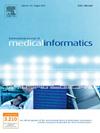Estimated carbon emissions and support cost savings to telemedicine for patients with tracheal diseases
IF 3.7
2区 医学
Q2 COMPUTER SCIENCE, INFORMATION SYSTEMS
International Journal of Medical Informatics
Pub Date : 2024-12-07
DOI:10.1016/j.ijmedinf.2024.105757
引用次数: 0
Abstract
Objective
The patient’s journey to the medical center for an outpatient visit can often mean hours of travel in their vehicle, leading to increased expenses and greater carbon dioxide (CO2) emissions into the environment. The study demonstrates the estimated carbon emission and cost savings associated with a telemedicine program dedicated to patients with tracheal disease in the Brazilian public health system.
Methods
Cross-sectional study of telemedicine visits for patients with tracheal disease referred to a public academic hospital between August 1, 2020, and December 30, 2023. The consultations occurred in a telemedicine department using the hospital’s proprietary platform. The analysis included the round-trip distance savings using home postal codes; CO2 emissions savings by transportation using the Greenhouse Gas Protocol (GHG Protocol) adapted to the Brazilian reality (“Programa Brasileiro GHG Protocol”); and the cost savings in transportation and support using the Brazil Ministry of Health program.
Results
1767 telemedicine visits with 680 patients were conducted, 363 (53.4 %) male and 317 (46.6 %) female, a median [IQR] age of 33 [12.0–51.0] years. Patients were from 170 Brazilian cities from 22 states. There were 2.219.544,3 round-trip kilometers saved (median per patient [IQR] 542,88km [190,36-2.672,6]), corresponding to an estimated 353.097,55kg of CO2 emissions savings (median per patient [IQR] 102,56kg [36,56-496,96]). The cost savings was 305.187,96 dollars (median per patient [IQR] $48,22 [24,97-162,51] dollars).
Conclusion
Telemedicine consultations, in addition to significantly reducing carbon emissions and costs, promote greater accessibility and sustainability in medical care. These findings may influence public policies to expand telemedicine programs, especially in remote regions, and strengthen environmental initiatives in healthcare.
估计碳排放和支持成本节约远程医疗为气管疾病患者。
目标:患者前往医疗中心门诊就医往往需要花费数小时的车程,这不仅增加了开支,还增加了二氧化碳(CO2)的排放量。本研究展示了巴西公共卫生系统中专门针对气管疾病患者的远程医疗项目的碳排放量估算和成本节约情况:对 2020 年 8 月 1 日至 2023 年 12 月 30 日期间转诊至一家公立学术医院的气管疾病患者进行远程医疗访问的横断面研究。会诊在远程医疗部门进行,使用的是医院的专有平台。分析包括使用家庭邮政编码节省的往返距离;使用适应巴西现实情况的《温室气体议定书》("Programa Brasileiro GHG Protocol")节省的交通二氧化碳排放量;以及使用巴西卫生部计划节省的交通和支持成本:共对 680 名患者进行了 1767 次远程医疗访问,其中男性 363 人(53.4%),女性 317 人(46.6%),年龄中位数[IQR]为 33 [12.0-51.0] 岁。患者来自巴西 22 个州的 170 个城市。节省的往返公里数为 2.219.544.3 公里(每位患者的中位数[IQR] 为 542.88 公里[190.36-2.672.6]),估计可减少 353.097.55 千克的二氧化碳排放量(每位患者的中位数[IQR] 为 102.56 千克[36.56-496.96])。节省的费用为 305.187.96 美元(每位患者的中位数[IQR]为 48.22 [24.97-162.51] 美元):结论:远程医疗会诊除了能显著减少碳排放和成本外,还能提高医疗服务的可及性和可持续性。这些发现可能会影响公共政策,以扩大远程医疗项目,尤其是在偏远地区,并加强医疗保健中的环保措施。
本文章由计算机程序翻译,如有差异,请以英文原文为准。
求助全文
约1分钟内获得全文
求助全文
来源期刊

International Journal of Medical Informatics
医学-计算机:信息系统
CiteScore
8.90
自引率
4.10%
发文量
217
审稿时长
42 days
期刊介绍:
International Journal of Medical Informatics provides an international medium for dissemination of original results and interpretative reviews concerning the field of medical informatics. The Journal emphasizes the evaluation of systems in healthcare settings.
The scope of journal covers:
Information systems, including national or international registration systems, hospital information systems, departmental and/or physician''s office systems, document handling systems, electronic medical record systems, standardization, systems integration etc.;
Computer-aided medical decision support systems using heuristic, algorithmic and/or statistical methods as exemplified in decision theory, protocol development, artificial intelligence, etc.
Educational computer based programs pertaining to medical informatics or medicine in general;
Organizational, economic, social, clinical impact, ethical and cost-benefit aspects of IT applications in health care.
 求助内容:
求助内容: 应助结果提醒方式:
应助结果提醒方式:


